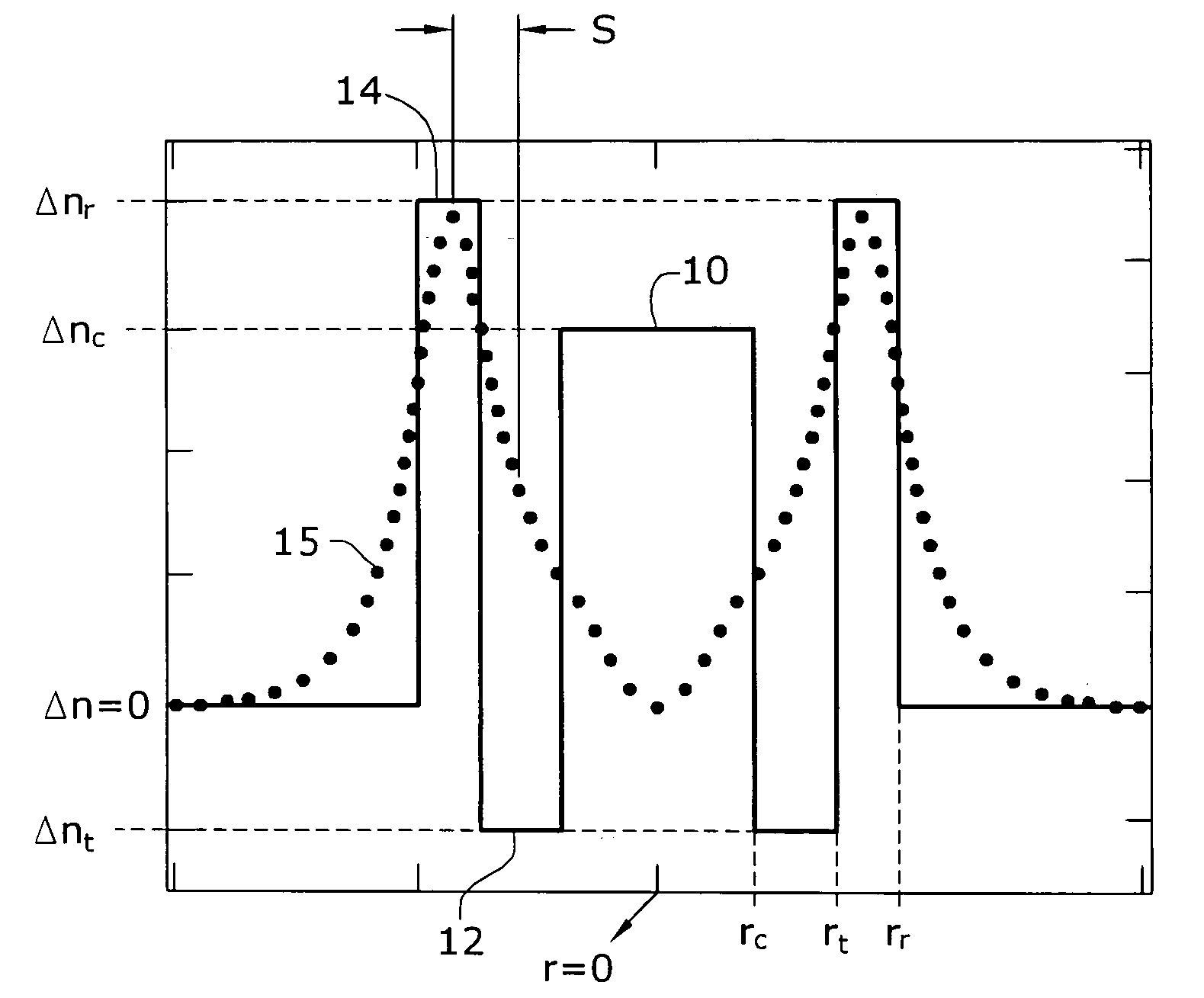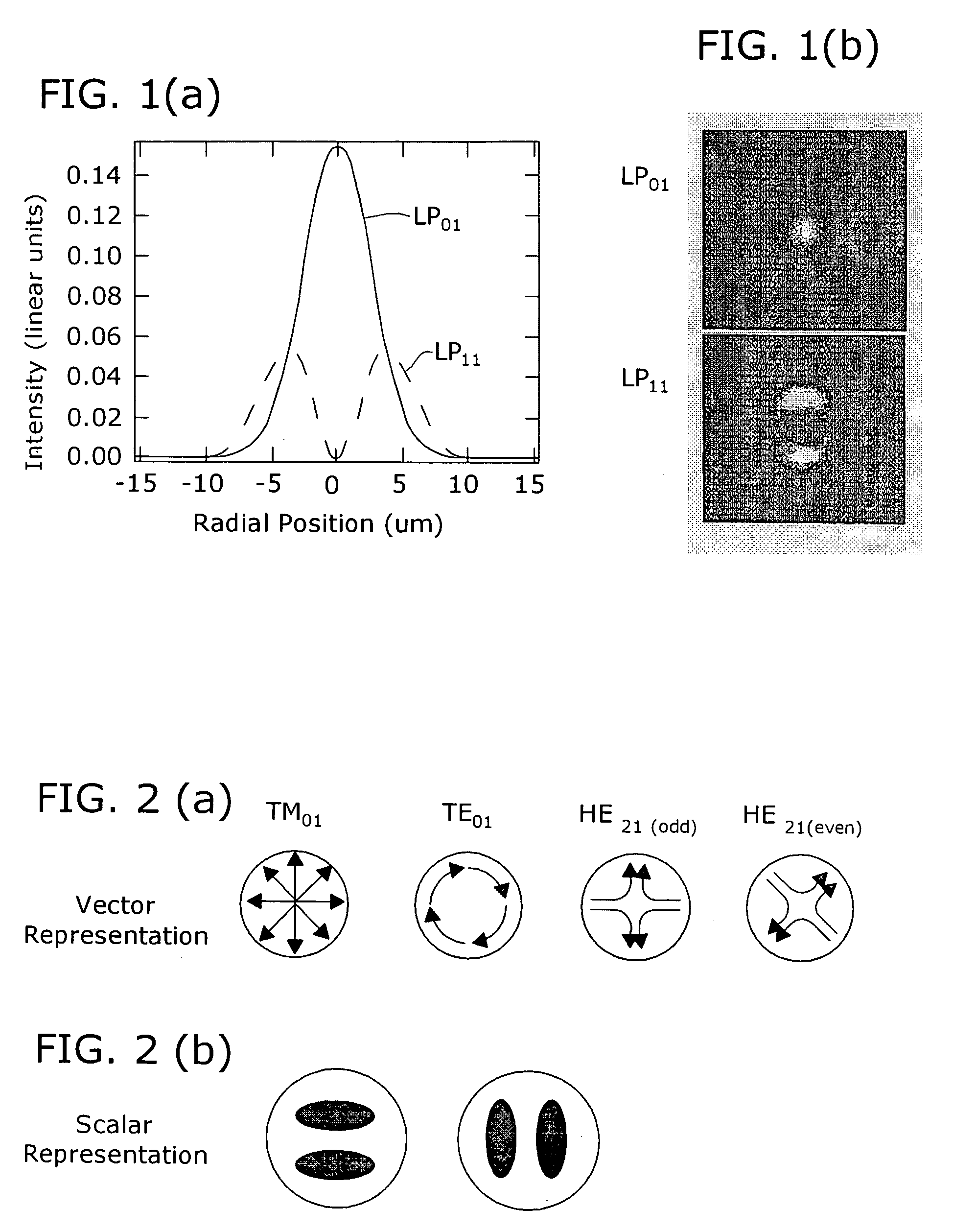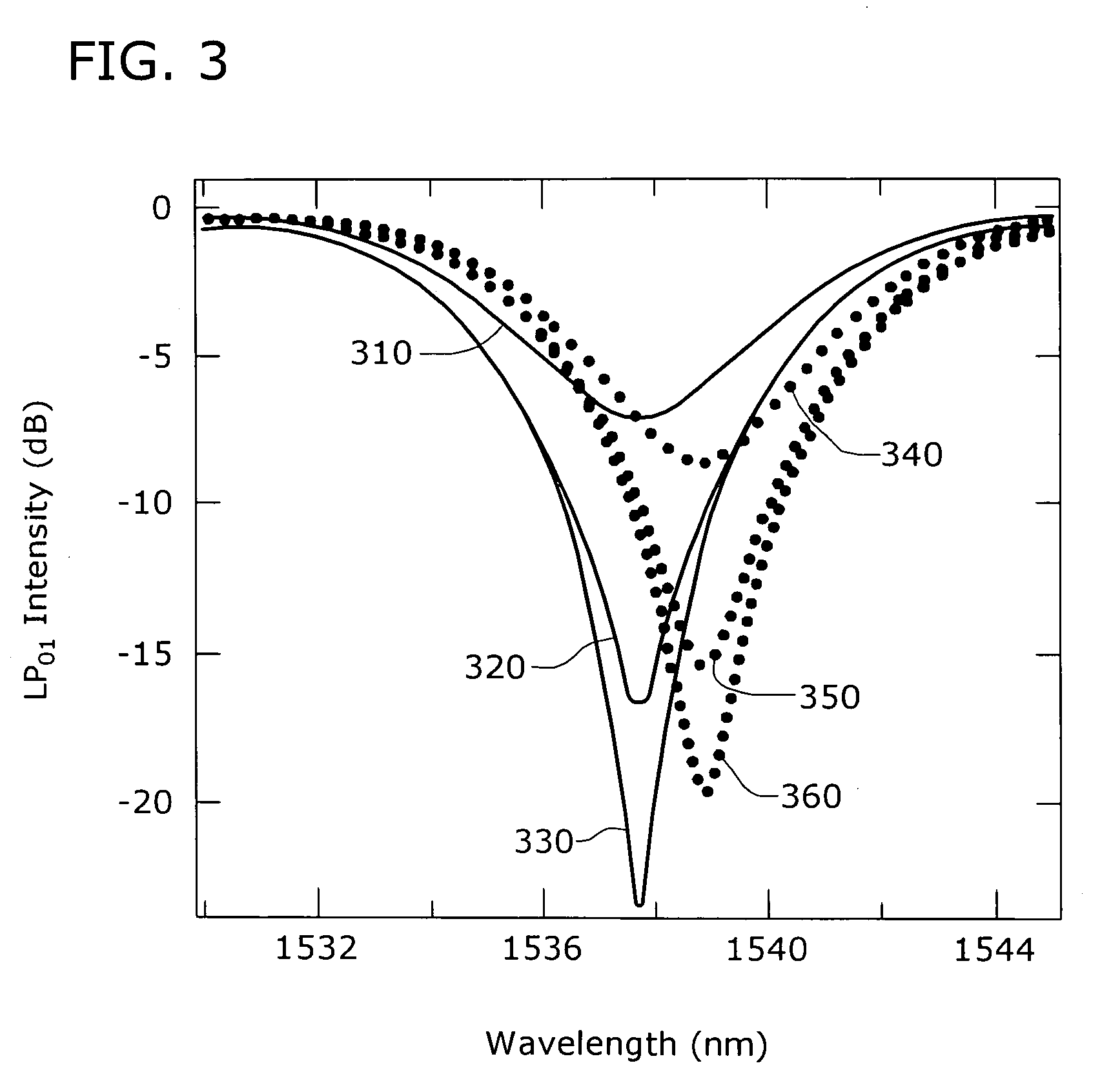Polarization insensitive microbend fiber gratings and devices using the same
a polarization-independent, microbend fiber technology, applied in the direction of cladded optical fibre, instruments, optical elements, etc., can solve the problems of limiting, coupling spectrum also being polarization dependent, inherent polarization sensitivity,
- Summary
- Abstract
- Description
- Claims
- Application Information
AI Technical Summary
Benefits of technology
Problems solved by technology
Method used
Image
Examples
Embodiment Construction
[0027] As will be discussed in detail below, the optical fiber within which a microbend grating is formed is intentionally designed, in accordance with the present invention, such that the propagation constants of the TE0m and TM0m modes are substantially separated from the propagation constant of the odd / even HE2m mode. As a result, the resonant wavelengths associated with the TE0m and TM0m modes will be significantly different / separated from the resonant wavelength of the HE2m mode, where the resonant wavelength of the HE2m mode is then defined as the transmission wavelength for the optical system. For the remainder of the discussion, it will be presumed that radial mode m will be the first order mode, where m=1. It is to be understood, however, that the principles of the present invention are equally applicable to higher order modes.
[0028] It has been found that fibers with substantially large radial gradients in their refractive index profiles (i.e., where a significant portion...
PUM
 Login to View More
Login to View More Abstract
Description
Claims
Application Information
 Login to View More
Login to View More - R&D
- Intellectual Property
- Life Sciences
- Materials
- Tech Scout
- Unparalleled Data Quality
- Higher Quality Content
- 60% Fewer Hallucinations
Browse by: Latest US Patents, China's latest patents, Technical Efficacy Thesaurus, Application Domain, Technology Topic, Popular Technical Reports.
© 2025 PatSnap. All rights reserved.Legal|Privacy policy|Modern Slavery Act Transparency Statement|Sitemap|About US| Contact US: help@patsnap.com



